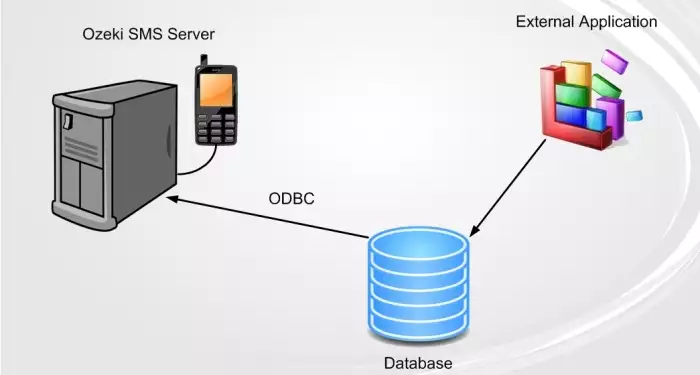SMS API for Database developers (SQL)
If you use the OZEKI Message Server
you can send and receive SMS messages using a database server with the help
of SQL queries.
In order to use this option, you
need to have a database server (such as Oracle, Access, MySql, MS SQL,
Postgres, Sybes, etc) installed, and there should be two
database tables created: ozekimessageout and
ozekimessagein. One of these will be used for sending and the
other for receiving SMS messages.
Ozeki Message Server will
connect to the database through a standard ADO or ODBC
connection (Figure 1). Using this connection it
will periodically query the database table ozekimessageout for
outgoing messages using a SELECT statement and will INSERT incoming messages into the database table used for incoming
messages (ozekimessagein).

If you want to send a message you can issue the following SQL
statement:
sql> INSERT INTO ozekimessageout (receiver,msg,id,status)
VALUES ('+36203105366','test message',23,'send');
|
It is important to mention that the SMS Server
identifies the messages by their ids. You must make sure that you specify
a unique id for each message or you should use auto_increment
columns. This ID is used by Ozeki Message Server to update the status attribute of the message. For example if the message is accepted by the GSM service provider for delivery it's status field is updated to 'transmitted' to notify the database programmer what happened to the message.
The incoming messages are placed into the
ozekimessagein table. You can see the create definition for
this table at the url above as well. To view the incoming messages
you can use the select statement.
sql> SELECT sender,msg,receivedtime FROM ozekimessagein; |
It is interesting that often, without any external application, you
can create powerful SMS enabled solutions. You can do this
with the help of database triggers or stored procedures. Here is an example:
Autoreply function with a Microsoft SQL Server:
| CREATE TRIGGER autoreply ON ozekimessagein FOR INSERT AS DECLARE @tel VARCHAR(30) SELECT TOP 1 @tel=sender FROM ozekimessagein ORDER BY ID DESC INSERT INTO ozekimessageout (receiver,msg,status) VALUES (@tel,'Thank you for the message','send') GO |
